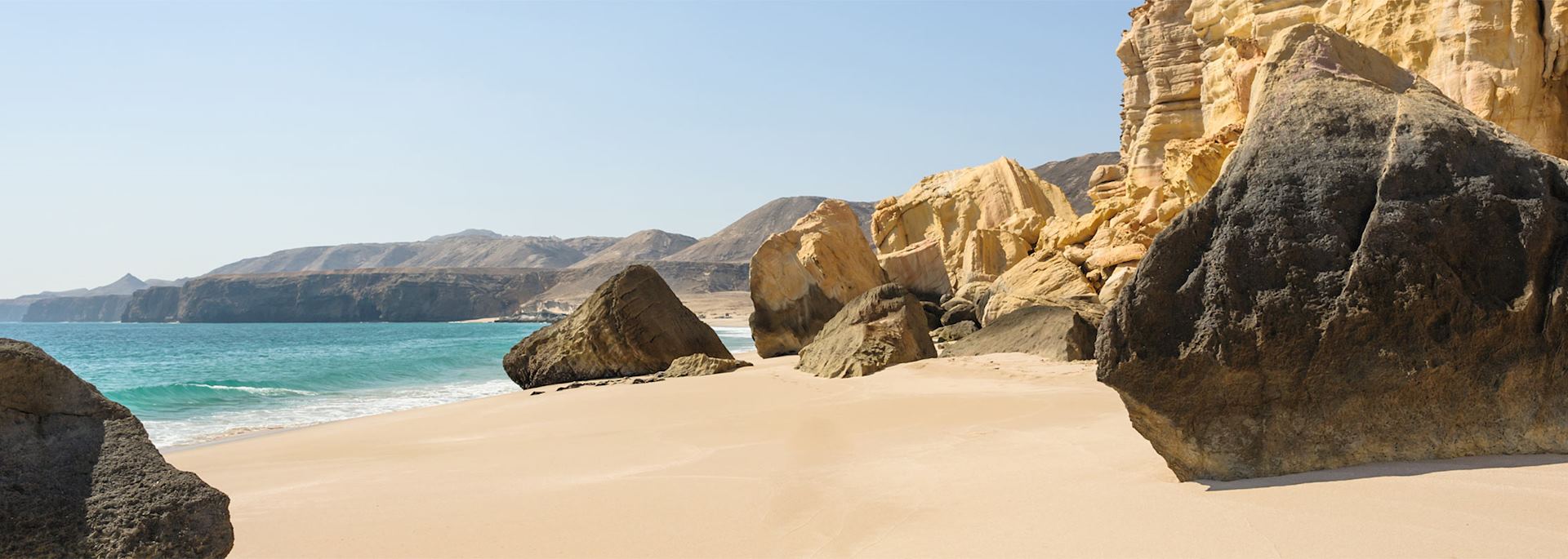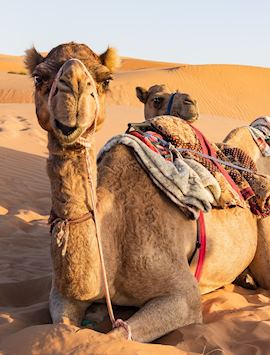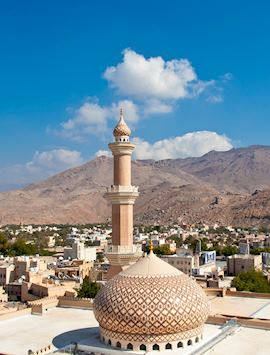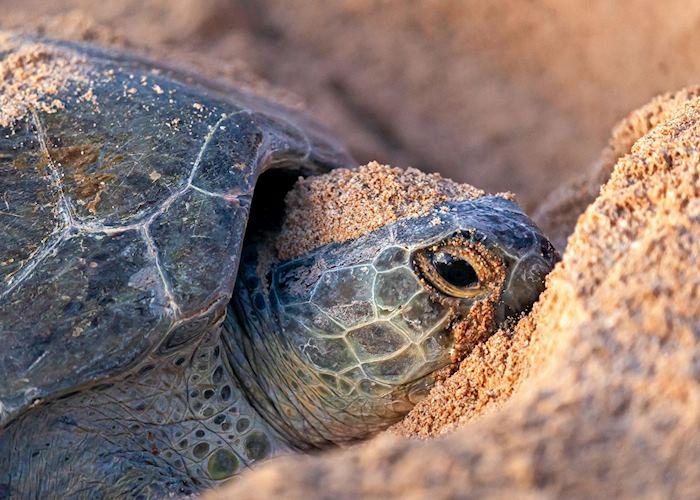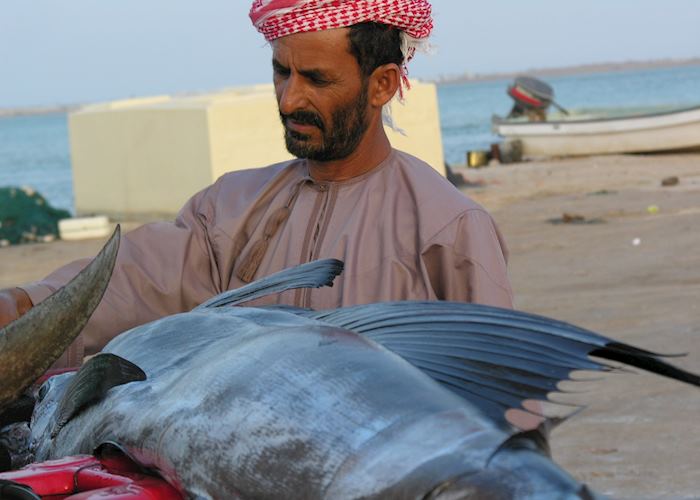Jump to:
Reached from the Wahiba Sands via the stunning water pools and shady canyon of Wadi Bani Khalid, Ras Al Jinz is a small sandy bay where greenback turtles come ashore to nest all year round (though the principal nesting season is July to September).
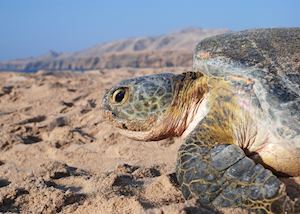 You need a permit to visit the beach at night, and we can obtain this for you: visits are undertaken in the company of a guide who ensures minimal disruption to the huge turtles as they dig their nests and lay their eggs.
You need a permit to visit the beach at night, and we can obtain this for you: visits are undertaken in the company of a guide who ensures minimal disruption to the huge turtles as they dig their nests and lay their eggs.
You should also be able to see some of the hatchlings making their precarious way down to the ocean.
who's been there
-
01993 838 92501993 838 430
- Make an enquiry
Suggested itineraries featuring Ras Al Jinz
Our itineraries will give you suggestions for what is possible when you travel in Ras Al Jinz, and they showcase routes we know work particularly well. Treat them as inspiration, because your trip will be created uniquely by one of our specialists.
Places near Ras Al Jinz
- Sur 23 miles away
- The Wahiba Sands 62 miles away
- Muscat 116 miles away
- Nizwa 151 miles away
- The Batinah Plain 173 miles away
- Jebel Akhdar 176 miles away
Photos of Ras Al Jinz
Accommodation choices for Ras Al Jinz
We've selected a range of accommodation options for when you visit Ras Al Jinz. Our choices usually come recommended for their character, facilities and service or location. Our specialists always aim to suggest properties that match your preferences.
-
![Exterior, Ras Al Jinz Turtle Reserve]()
Ras Al Jinz Turtle Reserve
Ras Al Jinz
Ideas for experiencing Ras Al Jinz
Our specialists seek out authentic ways to get to know the places that could feature in your trip. These activities reflect some of the experiences they've most enjoyed while visiting Ras Al Jinz, and which use the best local guides.
-
Green sea turtle evening beach tour ![Turtle, Ras Al Jinz]()
Green sea turtle evening beach tour
Green sea turtle evening beach tour
Head to green turtle beach to quietly view the turtles laying their eggs. This is a year-round activity.
View details
